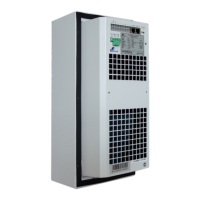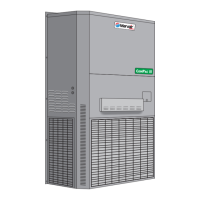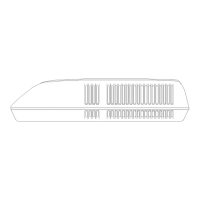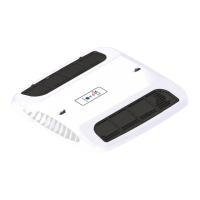26
ICE CFA1120A-3360A & CGA3180A I&O Manual 03/2021 Rev.5
WARNING FIRE HAZARD
Improper adjustment, alteration, service, maintenance or installation could cause serious injury,
death and/or property damage.
Installation or repairs made by unqualied persons could result in hazards to you and others.
Installation MUST conform with local codes or, in the absence of local codes, with codes of all
governmental authorities have jurisdiction.
The information contained in this manual is intended for use by a qualied service agency that is
experienced in such work, is familiar with all precautions and safety procedures required in such
work, and is equipped with the proper tools and test instruments.
3.4 Porting and Duct Work
General Information
Note: The following instructions are for general guidance only. Due to the wide variety of installa-
tion possibilities, specic instructions will not be given. When in doubt, follow standard and accepted
installation practices, or contact ICE™ for additional assistance.
Wall Openings
Measure the dimensions of the supply and return ports on the unit.
Cut the openings in the exterior wall for the supply and return. IMPORTANT: All units with electric
heat must have 1" (25.4mm) clearance on all four sides of the supply outlet duct ange on the
unit. The 1" (25.4mm) clearance must extend on all sides of the supply duct for the rst 3 feet
(1 meter) from the unit.
IMPORTANT: ICE™ requires a minimum of 1" (25.4mm) from the surface of any supply ducts to
combustible material for the rst 3 feet (1 meter) of the duct.
Ducting
Extensions should be cut ush with the inside wall for applications without duct work.
Applications using duct work should be designed and installed in accordance with all applicable safety
codes and standards. ICE strongly recommends referring to the current edition of the National Fire
Protection Association Standards 90A and 90B before designing and installing duct work. The duct
system must be engineered to insure sufcient air ow through the unit to prevent over-heating of the
heater element. This includes proper supply duct sizing, sufcient quantity of supply registers, adequate
return and lter area. Ductwork must be of correct material and must be properly insulated. Duct work
must be constructed of galvanized steel with a minimum thickness of .019 inches for the rst 3 feet (1
meter). Ductwork must be rmly attached, secured and sealed to prevent air leakage. Do not use duct
liner on inside of supply duct within 4 feet (122cm) of the unit.
Galvanized metal duct extensions should be used to simplify connections to duct work and grilles. Use
fabric boots to prevent the transmission of vibration through the duct system. The fabric must be U.L.
rated to a minimum of 197°F (92°C).
Minimum Airow Requirements
The duct system must be engineered to assure sufcient air ow through the unit even under adverse
conditions such as dirty lters, etc.
3.5 Top Flange Installation (See Figure 2)
1. All models have built-in side mounting anges.
2. Attach the top ange to the top of the air conditioner. The holes in the top of the air condtioner have
been predrilled. Remove the 4 screws in these holes and use these screws to attach the top ange
to the air conditioner.
3. Apply a bead of silicone sealer on the wall side of the bottom support brackets on the unit. Circle
the mounting holes with the silicone bead.
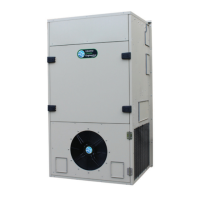
